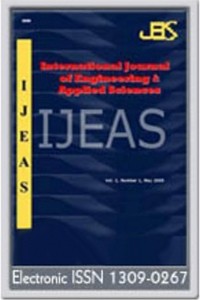Optimization of Clinker Grinding Using The Taguchi Method
The purpose of this study is to demonstrate how the application of the Taguchi method can be used to optimize clinker grinding. In order to observe the influencing degree of contol factors in a dry grinding system, three control factors namely ball size, fractional ball charge and speed of rotation, and each factor at three levels on product 80% passing size (d80) were studied and optimized. The experimental conditions were studied in the range of 13-45 mm for ball dimeter, 0.15-0.25 of fractional ball charge and 60-80% of critical speed for mill rotation. A three level orthogonal array design with nine experimental runs was selected. The Taguchi method includes regression of a model to the data, to predict an optimal combination of operating parameters. The predicted optimum point was determined and further tests confirmed the validity of the prediction. The ball size was found to have the largest effect on clinker grinding
Keywords:
grinding comminution, process optimization,
___
- Wang, J., Chen, Q., Kuang, Y., Lynch, A.J., Zhuo, J.,2009. Grinding process within vertical roller mills: experiment and simulation, Mining Science and Technology 19, 0097–0101.
- Jankovic, A., Valery, W., Davis, E., 2004. Cement grinding optimisation, Minerals 108 Engineering 17, 1075–1081.
- Seebach, M.V., Schneider, L., 1986. Update on finish grinding with improved energy efficiency, World Cem., 336–346.
- Worrel, E., Martin, N., Price, L., 2000. Potentials for energy efficiency improvement in the US cement industry, Energy 25, 1189–1214.
- Touil, D., Belaadi, S., Frances, C., 2008. The specific selection function effect on clinker grinding efficiency in a dry batch ball mill, International Journal of Mineral Processing 87, 141–145.
- Benzer, H., 2005. Modeling and simulation of a fully air swept ball mill in a raw material grinding circuit, Powder Technology 150, 145–154.
- Lynch, A.J., 1977. Mineral Crushing and Grinding Circuits: Their Simulation, Optimization, Design and Control, Elsevier.
- Gandhi A.M.S., 2003. Problem solving using Taguchi DOE techniques, Ind Eng J XXXII: 16–25.
- Taso, C.C., Hocheng, H., 2004. Taguchi analysis of delamination associated with various drill bits in drilling of composite material, Int J Mach Tools Manuf. 44, 1085–1090.
- 0] Pignatiello, J.J., 1988. An overview of strategy and tactics of Taguchi, IEE Trans. 20 (3), 247–254.
- 1] Peace, G.S., 1995. Taguchi Methods: A hands-on Approach to Quality Engineering, Addison-Wesley, New York, 273–337.
- 2] Phadke, M.S., Kackar, R.N., Speeney, D.D., Grieco, M.J., 1983. Off-line quality control in integrated circuit fabrication using experimental design, Bell Syst. Tech. J. 62 (5), 1273–1309.
- 3] Oktem, H., Erzurumlu, T., Uzman, I., 2007. Application of Taguchi optimization technique in determining plastic injection molding process parameters for a thin-shell part, Materials and Design, (28) 1271–1278.
- 4] Çopur, M., Özmetin, C., Özmetin, E., Kocakerim, M. M., 2004. Optimization study of the leaching of roasted zinc sulphide concentrate with sulphuric acid solutions, Chemical Engineering and Processing 43, 1007–1014.
- 5] Kwak, J.S., 2005. Application of Taguchi and response surface methodologies for geometric error in surface grinding process, Int. Journal of Machine Tools & Manufacture 45, 327–334.
- Başlangıç: 2009
- Yayıncı: Akdeniz Üniversitesi
